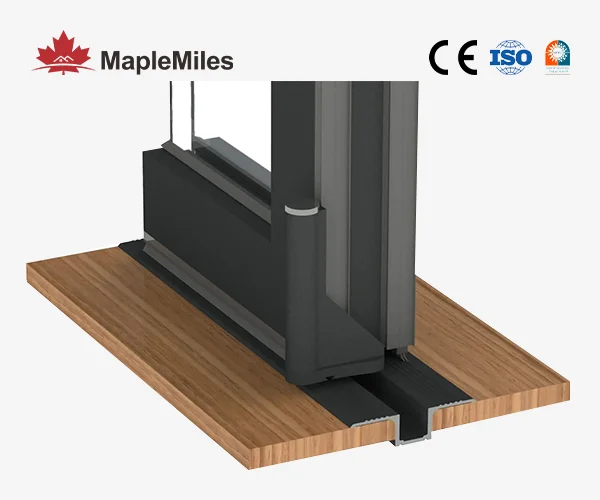When it comes to installing sliding windows and doors, the type of track you choose plays a crucial role in determining the overall functionality, durability, and waterproof performance of the system. Whether you’re working on a residential or commercial project, understanding different types of tracks will help you select the most suitable solution for your space.

Common Types of Windows and Doors Tracks
Flat Tracks
Flat track is one of the most common door and window tracks because it is easy to install and use. In addition, after a long period of testing, this flat track is resistant to trampling and has a longer service life.
Single Flat Track
Single Track is the most basic and most commonly used track for windows and doors. This track runs along the top or bottom of the door frame and is easy to install and operate. It only has one side of the door panel that can be opened, while the fixed panel is on the other side.
Double Flat Track
This track means that both door panels can slide back and forth along their own tracks. Double track doors are equipped with fixings at the top and bottom. Its advantage is that two door panels can be stacked together, which is convenient and more flexible.
Triple Flat Track
Three tracks are suitable for doors and windows with multiple panels. It allows multiple panels to overlap to maximize space. This type of track has stabilizers at the top and bottom. Therefore, three-track doors and windows are suitable for locations with larger opening areas.
Pre-bury Track (Airplane Track)
During the construction phase, you need to pre-bury the track in the ground or under the door opening in advance. Then connect it directly to the track when the door is installed. After installation, you can achieve a threshold-free design and barrier-free travel! The advantage of this design is that it is safer because the track is hidden and there is no risk of tripping. Since the sides of this track resemble airplane wings, it is also called airplane track.
High and Low Track
In the same door and window system, manufacturers can achieve better waterproof performance by using the height difference of the track. In practical applications, the main function of the high and low tracks is to prevent rain or seawater from flowing back. Secondly, when multiple doors slide at the same time, the high and low tracks can also ensure that each door runs along its own independent track without collision or jamming. Generally, high-end residences and areas with frequent rain are more suitable for this type of track.


Comparison of Different Tracks
| Track Type | Suitable Panels | Movement | Water Resistance | Best Application |
| Single Flat Track | 1 | One-way slide | Low | Small windows, basic sliding |
| Double Flat Track | 2 | Both panels slide | Moderate | Balcony doors, room dividers |
| Triple Flat Track | 3+ | Multi-panel slide | Moderate | Large openings, wide views |
| Pre-bury Track | 1–3 | Seamless slide | Good | Modern interiors, accessible use |
| High and Low Track | 2–6 | Independent slide | Excellent | Luxury homes, waterproof needs |
Final Tips about Choosing Tracks
The right track enhances security, efficiency and longevity! Please always consult a professional to match track systems with your door/window material (aluminum, PVC, wood) and local climate conditions.

